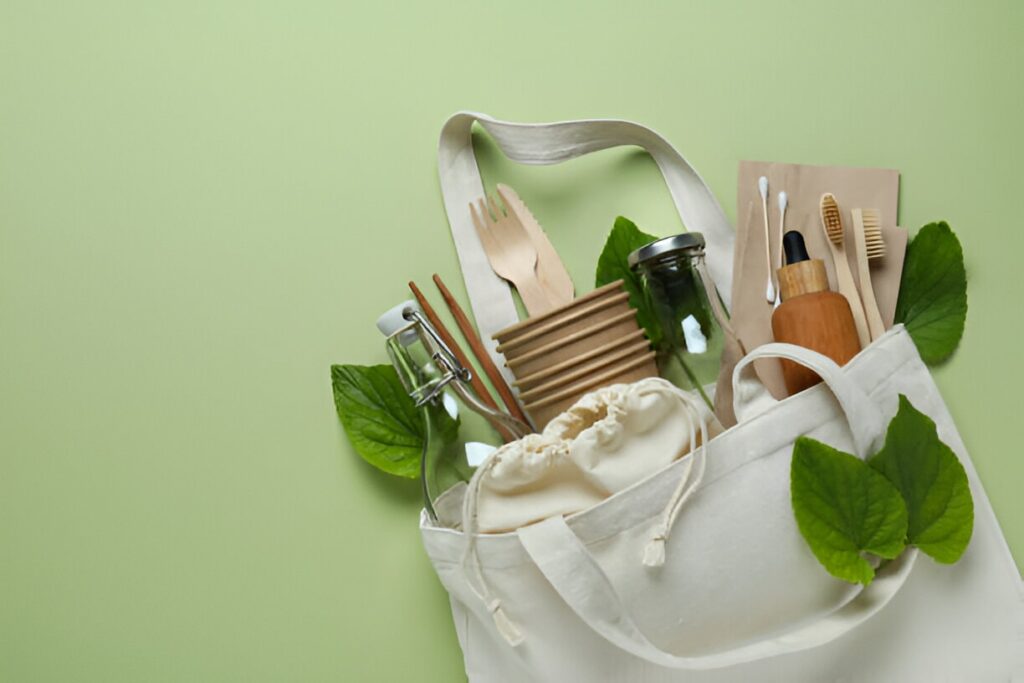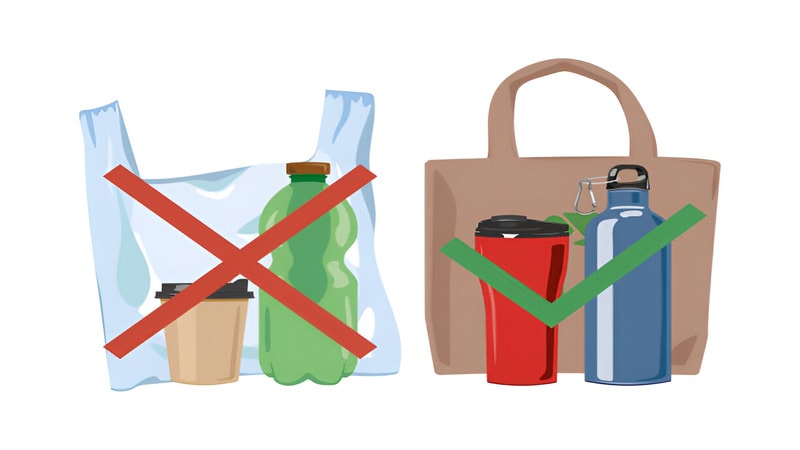
Plastic is everywhere. We use it for bags, bottles, straws, food packaging, and more. But this convenience has a cost. The plastic harms the environment, human health, and the planet’s future.
Plastic waste is now a major global issue. Most plastic comes from fossil fuels and stays in nature for centuries. This not only affects the environment but also human health. The search for sustainable plastic alternatives is more urgent than ever. Many eco-friendly alternatives now come from renewable resources, reducing both plastic use and carbon emissions.
In this article, we’ll look at the need to move away from conventional plastic. We’ll explore alternatives to plastic made from different materials. Do not skip and stay with us till the last line.
Why We Need Alternatives to Plastic
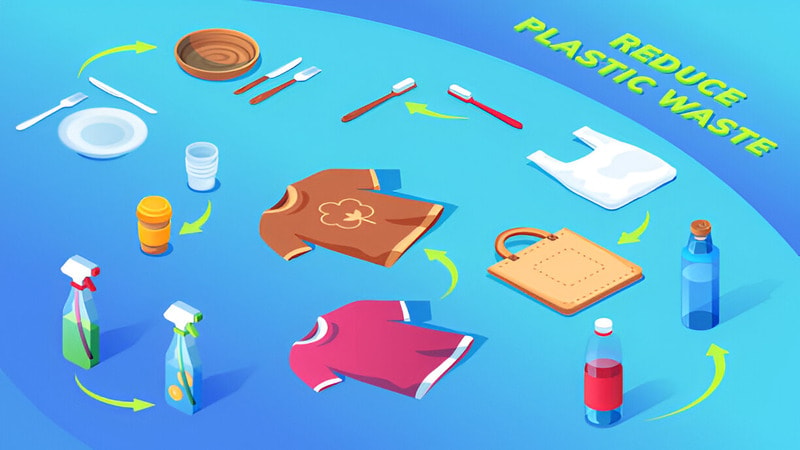
Plastic is part of daily life. But most plastic, like packaging and bottles, is used once and thrown away. Much of it ends up in landfills, oceans, and even the food we eat.
Here’s how plastic harms the environment:
- Plastic waste stays for centuries; it doesn’t break down easily
- Wildlife suffers when animals eat or get stuck in plastic
- Single-use plastic builds up fast, like tea bags, straws, and plastic wrap
- Non-biodegradable plastics pollute soil and water, harming plants and animals
Switching to sustainable plastic alternatives helps reduce waste, protect the environment, and conserve natural resources. Materials like glass containers, bamboo, paper, and seaweed-based packaging are safer, renewable, and more environmentally friendly.
Popular Alternatives to Plastic Materials
The world is moving away from traditional plastic. Many eco-friendly alternatives now replace plastic in packaging, containers, and other everyday products. These materials come from natural sources or recycled waste. They help reduce plastic use, lower carbon emissions, and protect the environment.
Biodegradable Plastics
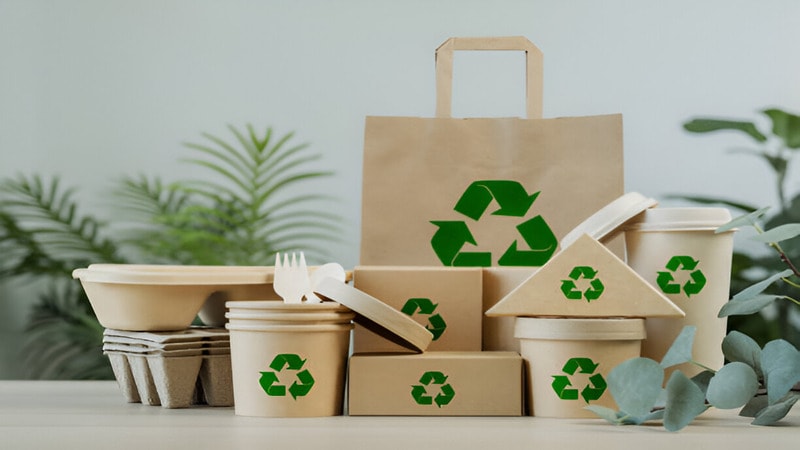
Biodegradable plastics are made from renewable raw materials like cornstarch, sugarcane, or potato starch. These break down more easily than conventional plastic, especially in home composts or industrial composting setups.
- Uses: Cutlery, plastic bags, food packaging, and single-use plastic containers
- Example: PLA (Polylactic Acid) is a compostable option used in cups, trays, and plastic wrap replacements
These are a great alternative to synthetic polymers. They help reduce plastic waste and plastic pollution while supporting sustainable plastic alternatives.
Glass
Glass is one of the oldest and safest alternatives to plastic. It is reusable, recyclable, and non-toxic. Glass does not leach chemicals into food or drinks.
- Uses: Glass containers, jars, bottles for water, juices, and food storage
- Example: Glass water bottles can fully replace plastic bottles
Glass lasts a long time, and when it breaks, it can be recycled many times without losing quality. It’s a smart choice for reducing plastic use at home and in business.
Metal
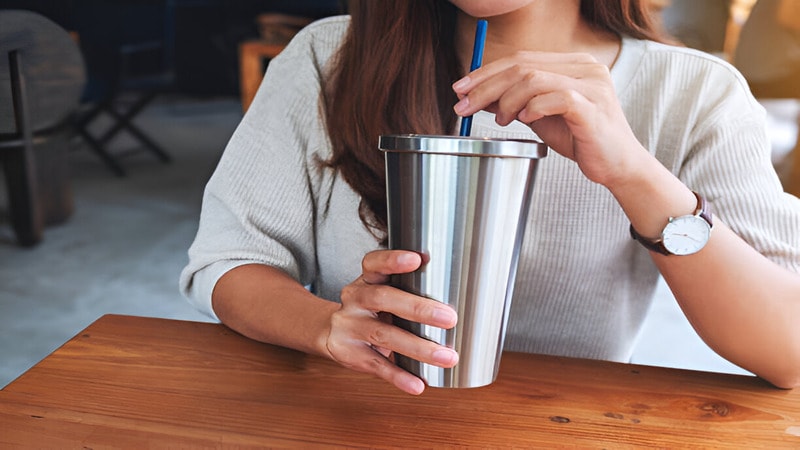
Stainless steel and aluminum are strong, long-lasting, and recyclable. They are often used as replacements for plastic in food and drink storage.
- Uses: Metal straws, water bottles, coffee cups, food containers, and cutlery
- Example: Stainless steel straws offer a lasting solution to plastic straws
Metal containers work well for the transport and storage of food items across various dimensions and conditions. They lower the need for single-use plastic.
Bamboo
Bamboo is a renewable resource that grows fast and does not require much land use. It is biodegradable and can be used to make many daily-use items.
- Uses: Bamboo toothbrushes, straws, cutlery, and bags
- Example: Bamboo toothbrushes are an easy switch from plastic toothbrushes
Bamboo offers a natural look, feels light, and breaks down faster than plastic. It’s now found in many eco-friendly alternatives to traditional plastic.
Paper
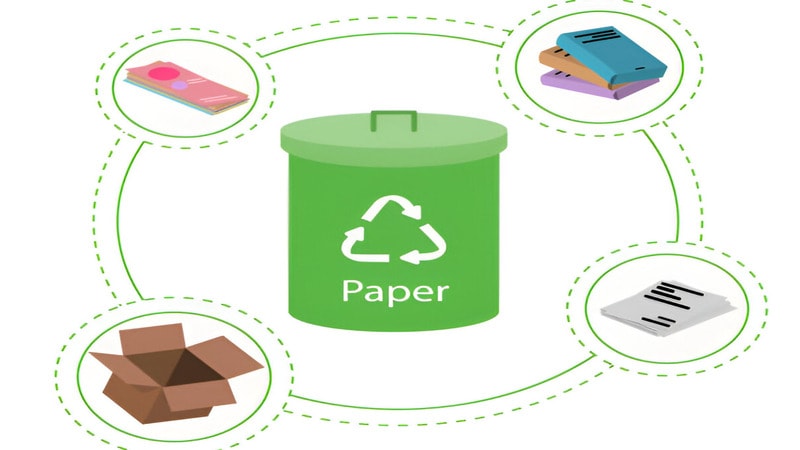
Paper is biodegradable, recyclable, and widely used in place of plastic packaging. It works well for dry food items and light goods.
- Uses: Paper bags, wrapping paper, coffee cups, and boxes
- Example: Paper shopping bags now replace many single-use plastic bags
Paper comes from natural sources like wood fiber. Though not suitable for all packaging needs, it helps cut down plastic waste in many common areas.
Hemp
Hemp is a strong, biodegradable fiber grown with less water and fewer chemicals. It is often used in textiles and packaging.
- Uses: Hemp bags, clothing, and accessories
- Example: Hemp tote bags are now a popular swap for plastic bags
Hemp-based materials are durable and support lower environmental footprints. They also reduce dependency on fossil fuels and plastic production.
Recycled Materials
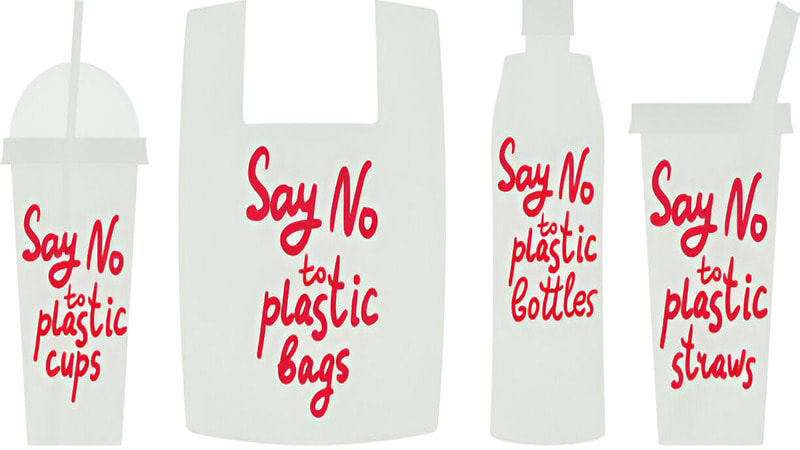
Recycled materials are made from used plastic, fabric, or paper waste. These reduce the need for new raw materials and cut plastic pollution.
- Uses: Recycled polyester in bags, clothes, or accessories
- Example: Recycled polyester bags are reused instead of creating new plastic bags
Using recycled products supports a circular economy and helps practically address the plastic problem.
People have started using their containers more, looking for alternatives to plastic in all parts of life. From food packaging to chewing gum and disposable tableware, sustainable choices are becoming more available. Each small change adds up to lower plastic waste and a healthier environment.
How Businesses Can Switch to Plastic Alternatives
Businesses are large contributors to plastic waste. From packaging to products, plastic is used in many steps. More businesses have started looking for sustainable alternatives. The goal is to cut plastic use, lower carbon emissions, and offer an eco-friendly lifestyle.
Customers also care more about the environment. 66% of consumers say sustainability influences their purchase decisions, including 75% of millennials. Companies that move to sustainable plastic alternatives can meet this demand and reduce their environmental footprint.
Sourcing Eco-Friendly Materials

Businesses need to begin by choosing better, planet-friendly materials. Ideally, these should come from renewable sources or break down naturally without harming the environment. Biodegradable plastics, for example, are made from corn starch, sugarcane, or potato starch. Recycled materials are also valuable. Reused plastic waste or recycled polyester can give old resources a second life.
Natural fibers like hemp, bamboo, and cotton offer a strong, biodegradable alternative to synthetic fabrics. Furthermore, for packaging and storage, glass is a clean, reusable choice for containers, bottles, and jars.
Metals work well for items like reusable straws, food containers, and cutlery, offering durability without the waste. Paper continues to be a reliable option for wrapping, packaging, and tea bags. There’s also seaweed-based packaging, a newer innovation that breaks down safely in the environment.
Sustainable Packaging
Plastic packaging is one of the biggest contributors to global plastic pollution. Switching to sustainable packaging solutions is essential. Many businesses are now using paper boxes and bags or wraps that can be composted at home. Glass is gaining popularity for food storage, while metal tins and jars are replacing plastic in various retail applications.
Lighter alternatives such as bio-based PET and biodegradable plastics are often used for lighter packaging needs. For durability, some companies choose platinum silicone, especially for reusable food-grade containers. Bamboo, another eco-friendly material, is commonly used for boxes or trays in retail displays.

These alternatives work just as well as traditional plastics but without leaving long-term waste behind. Plus, thoughtful design, like using compact sizes or lighter materials, can help improve transport efficiency and reduce the carbon footprint of shipping.
Customer Engagement
Sustainability isn’t just about switching materials. It’s also about keeping customers informed and involved. Businesses can build loyalty by encouraging customers to bring reusable containers and offering discounts as a reward. Labeling products clearly to show whether the packaging is recyclable or biodegradable also goes a long way in guiding consumer choices.
Educational campaigns help people understand how using less plastic benefits both human health and the planet. Many brands are launching eco-conscious product lines, like bamboo toothbrushes or reusable shopping bags, which cater to growing consumer interest. Sharing reports or updates about reduced plastic usage also builds trust by showing real progress.
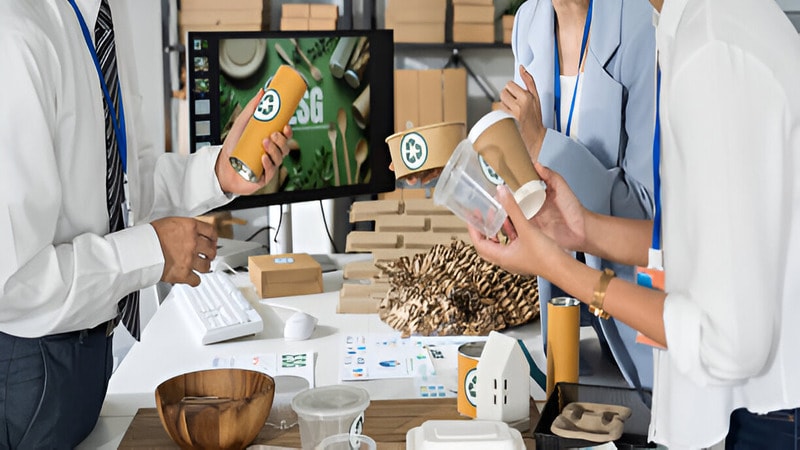
Brands that lead with action often build stronger loyalty. You won’t believe it, but 80% of global consumers will pay up to 5% more for sustainable products . People feel good buying from companies that reduce plastic waste and offer great alternatives.
By using different materials and making small product changes, businesses can respond to the plastic crisis while staying competitive. These steps show leadership and care, both for people and the environment.
How Consumers Can Choose Plastic Alternatives
While businesses play a big role in reducing plastic, consumers have just as much power. By making thoughtful choices every day, people can support the shift to a more sustainable world.
Making the Switch
Starting with small changes can make a big difference. One of the easiest steps is replacing everyday plastic items with eco-friendly alternatives. Today, it’s simple to swap plastic bags for reusable ones. Bringing your containers for takeaway food or grocery shopping is another smart move that quickly cuts down on waste.
Storing leftovers in glass containers or metal jars instead of plastic keeps your food safer and your kitchen greener. Instead of plastic wrap, try beeswax paper or compostable sheets. Plastic straws and toothbrushes can be replaced with bamboo or metal versions. Even small decisions, like switching from single-use tea bags and disposable plates to reusable options, reduce waste over time.
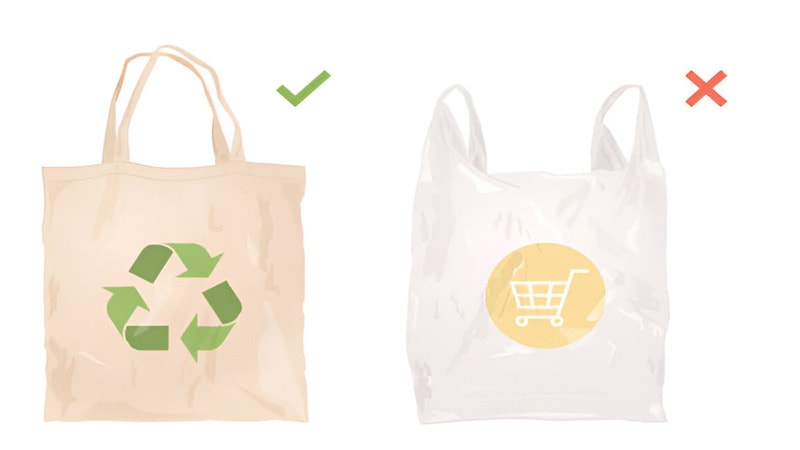
If you replace plastic bottles with glass or stainless steel ones, you’ll soon notice a change, not just in how much plastic you use, but in how you think about consumption. Each of these swaps supports more responsible production and shipping, too.
Eco-Friendly Products
With so many products labeled as “sustainable,” it’s important to look beyond the packaging. Always check the materials used. Good signs include bamboo, paper, recycled materials, or biodegradable plastics made from natural sources. Try to avoid items made with synthetic or petroleum-based plastics.
You can ask yourself a few quick questions. Is the product made from renewable materials? Can it be composted or safely biodegraded? Will it last, or is it designed for just one use? Even the type of packaging used can reveal whether a product truly supports the environment.
Green Certifications
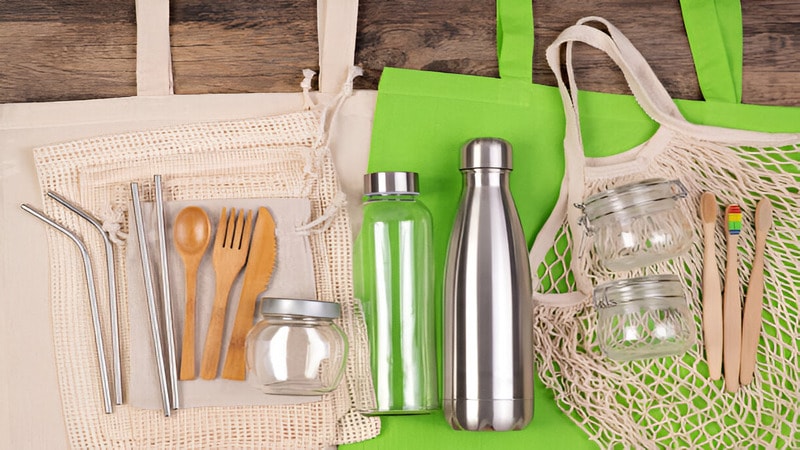
If you’re unsure whether a product is truly eco-friendly, check for green certifications. These help confirm both the environmental and ethical standards behind the item. For example, Fair Trade shows that the materials were sourced ethically. The Global Recycled Standard ensures proper use of recycled content.
OEKO-TEX verifies that textiles are free of harmful chemicals. BPI certification confirms that a product is truly compostable. And FSC certification guarantees paper or wood comes from well-managed forests. These trusted labels help you make informed choices and push more companies to improve their environmental practices.
By choosing the right alternatives to plastic and understanding what to look for, consumers can make smart, sustainable choices. These choices help reduce plastic pollution and support a cleaner world.
Frequently Asked Questions (FAQs)
What are some common alternatives to plastic?
Bamboo, glass, metal, paper, biodegradable plastics, and recycled materials are widely used as plastic alternatives.
How can I identify eco-friendly products?
Check the raw materials, look for green certifications, and choose items made from renewable resources or compostable materials.
Can businesses reduce plastic usage with alternatives?
Yes, by switching to sustainable packaging and raw materials, businesses can significantly cut down plastic production and waste.
Conclusion
Plastic use continues to harm the environment, wildlife, and even human health. From plastic packaging to plastic toothbrushes, these items add to plastic waste and pollution every day. But change is possible, and it starts with better choices.
Switching to sustainable plastic alternatives is one of the most effective ways to reduce plastic pollution. Whether it’s using own containers, choosing glass jars, or replacing single-use plastic with biodegradable plastics, each step counts. Businesses and consumers alike play a role in cutting back on plastic production and lowering the environmental footprint.
Switch to Sustainable Packaging with Itendee
Itendee specializes in eco-friendly, custom packaging for businesses. They serve over 10,000 brands, offering biodegradable plastics, recyclable options, and reusable bags tailored to reduce environmental footprint. Contact us to request samples or get a custom quote for your eco-friendly packaging needs.

